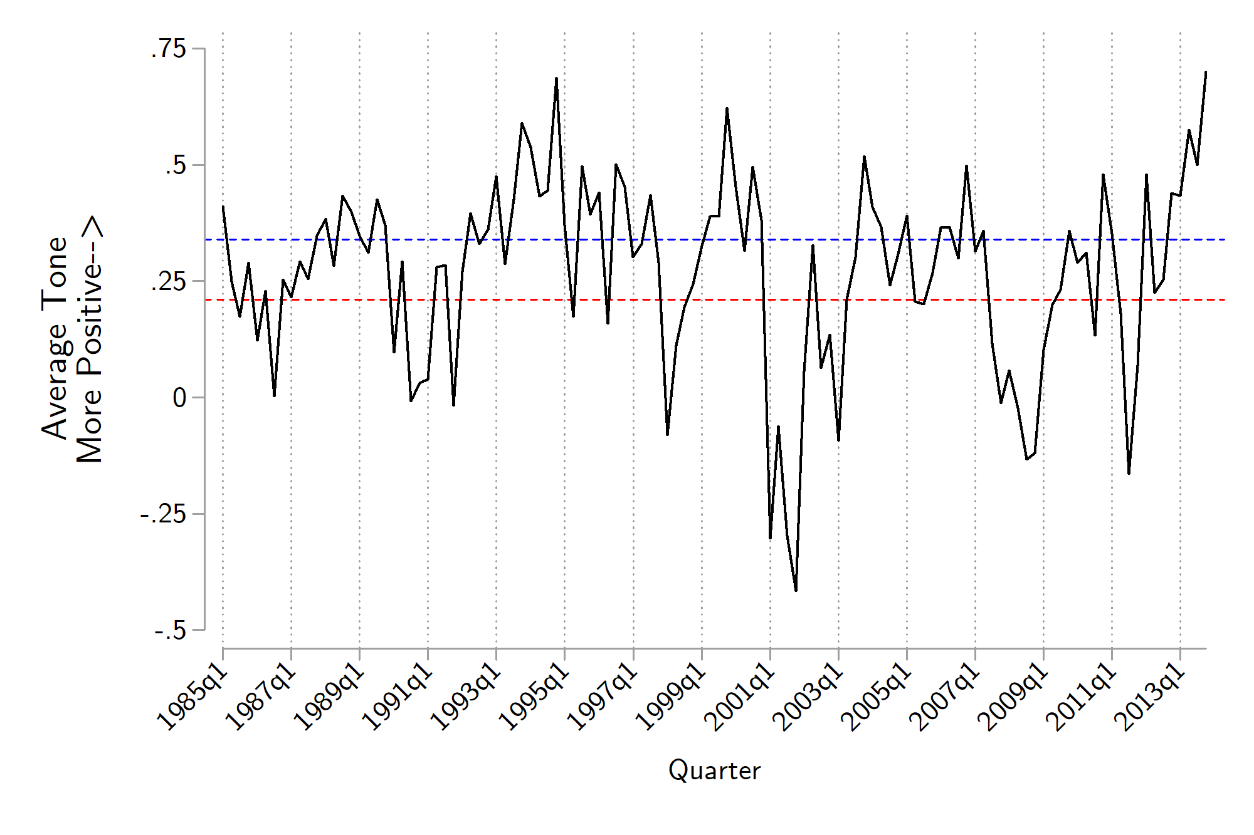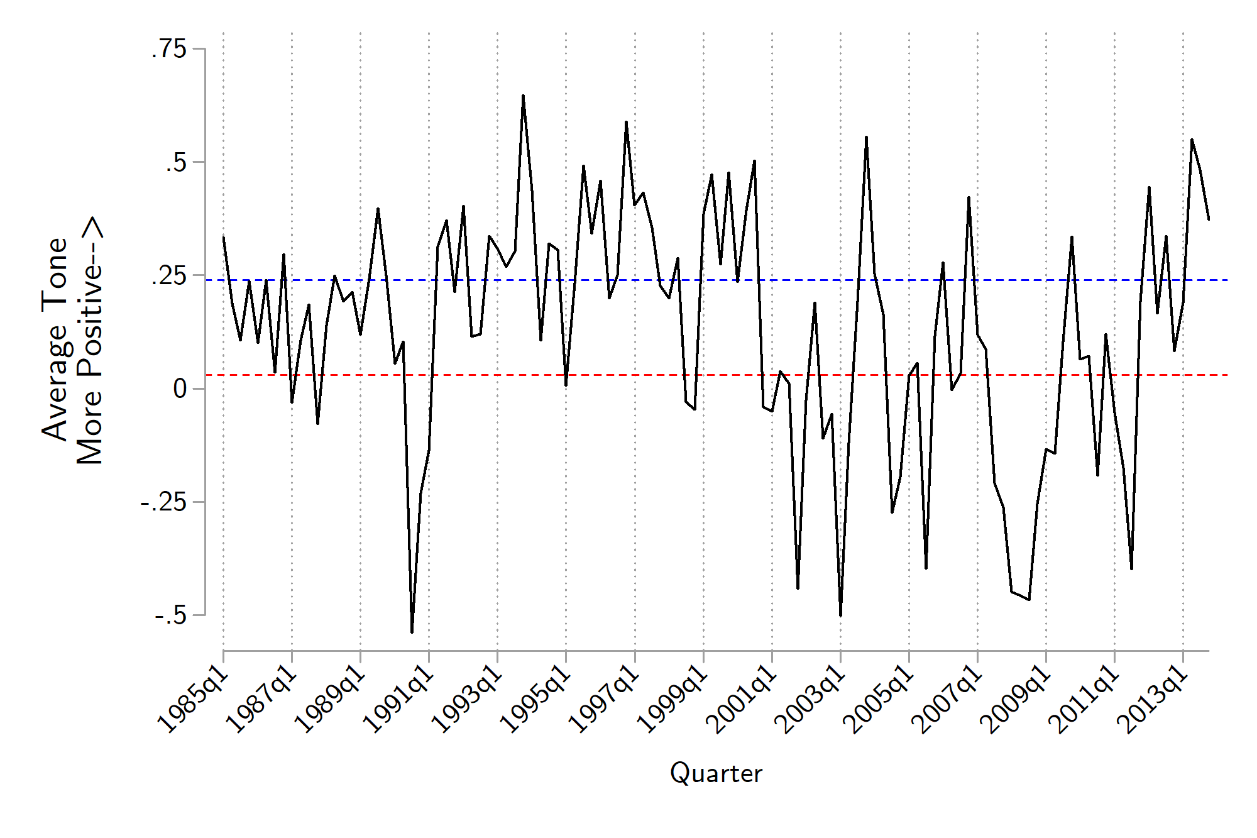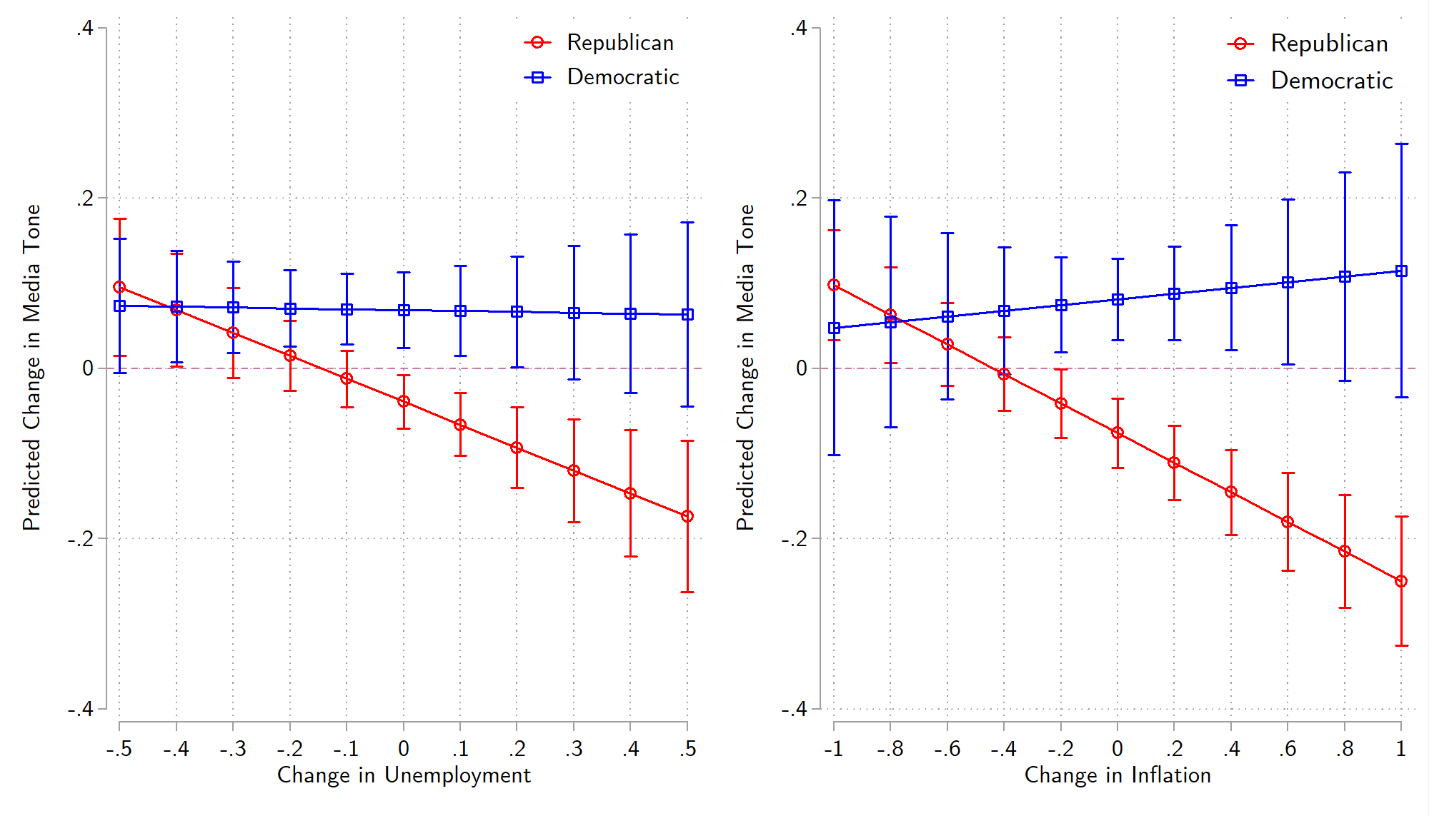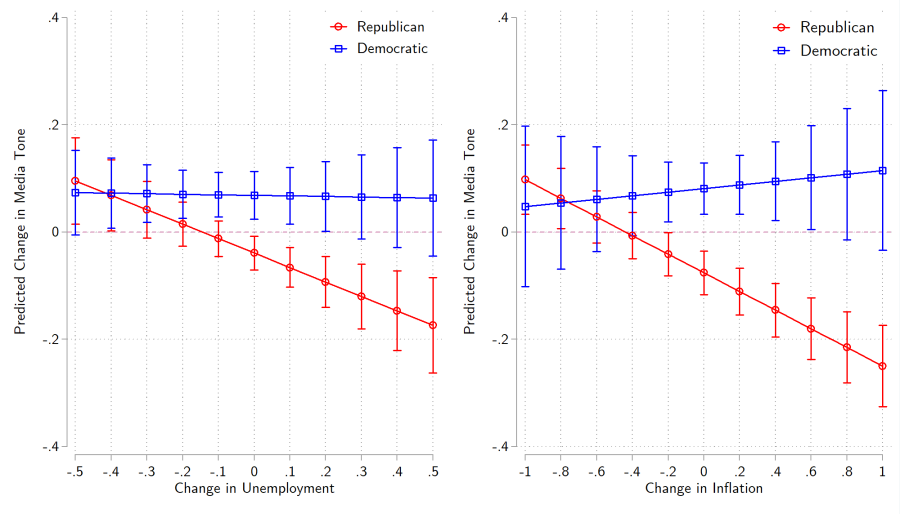As carried on LSE’s USAPP blog, February 8, 2019
Since even before his election over two years ago, President Donald Trump and his Republican surrogates have made a habit of responding to critical news coverage with allegations that mainstream press reports are “fake news.” This allegation, regardless of how often it is repeated, has been shown to be fundamentally without merit.
However, there has also been a long history of complaints from conservative elites that journalists are biased against conservatives and the Republican Party in their reporting for mainstream news outlets. There is evidence that most journalists identify with the Democratic Party and as ideological liberals. Consequently, these allegations cannot be so easily dismissed.
In new research, I find evidence of considerable bias against Republican presidential administrations in mainstream economic news content.
Perspectives on Partisan Media Bias
Scholarly research on partisan media bias has a history almost as long as conservative complaints about such bias. There are reasoned arguments underlying a number of different perspectives. Some scholars have argued that we might expect coverage to be biased in favour of conservatives because of corporate concentration in the news media. Others contend that editors have the ability to orient news content towards the tastes of their outlet’s readers, so we should expect bias to vary accordingly.
These perspectives implicitly minimize the role of journalists in subtly shaping content in ways they see fit. They can do this by deciding which perspectives to emphasize or deemphasize in the course of writing a story – known as framing. This process can be shaped by a number of different factors, but one of which could well be the values and perspectives brought to the table by the individual journalist.
Detecting Media Bias
How would we know if journalists are allowing their values and partisanship to affect the tenor of their content? There is no straightforward answer to this question. The crux of the problem is that negative or positive coverage may be deserved depending on the performance of politicians of the Democratic or Republican parties. For example, we might expect a lower tone than usual to be directed at the Republican Party during the 2008 Financial Crisis because they controlled the White House. Conversely, balanced coverage can be seen as biased if performance between the parties was anything but equal. It would strain credulity to expect equal treatment of the Democratic and the Republican parties in stories related to corruption under the current administration.
To address this problem, I examine economic news content. I argue that this content is likely to be biased if it is systematically more positive during Republican or Democratic presidencies even after accounting for objective economic conditions. To test this proposition I downloaded over 400,000 news stories on unemployment and inflation between 1985 and 2013 from the Associated Press newswire and an assortment of high-circulating newspapers, including prominent national newspapers like the New York Times and the USA Today, and those with histories of endorsing the Republican Party, such as the Dallas Morning News and the San Diego Union-Tribune.
I measure the tone of news content in these articles by using the Lexicoder Sentiment Dictionary, which allows me to count the number of positively and negatively-charged words in each article in order to construct corresponding tone scores. From this, I create over-time measures of tone in unemployment and inflation coverage for my sampled news outlets, averaged quarterly. Armed with this data, I estimate what we would expect the tone of coverage to be during Democratic and Republican administrations with equivalent levels of economic performance.
I find that unemployment news content is approximately 12 percent more favourable during Democratic presidencies. The equivalent number for inflation coverage is 18 percent. Figures 1 and 2 below plot the tone of unemployment and inflation coverage, respectively. The dotted red line displays the estimated average tone during Republican administrations after controlling for economic performance, while the dotted blue line shows the equivalent for Democratic administrations.
Figure 1 – Estimated bias in media tone in unemployment coverage

Note: blue (red) dashed line indicates estimated tone during Democratic (Republican) administrations.
Figure 2 – Estimated bias in media tone in inflation coverage

Note: blue (red) dashed line indicates estimated tone during Democratic (Republican) administrations.
Biased Reaction to Changing Economic Conditions
I conduct further analyses on the media’s reaction to short-term developments in the economy. Substantial research has shown that journalists adjust their reporting largely in response to short-term changes in the economy rather than in response to long-term developments. They also change their coverage more in response to negative developments rather than positive ones.
With this in mind, we might expect journalists to react more negatively to short-term, worsening economic conditions during Republican presidencies if there is partisan bias in the news media. So, how much do we expect the tone of coverage to change in response to a 0.5 percent increase in the unemployment rate for Democratic and Republican administrations with the same starting unemployment rate?
I find that only Republican administrations are treated with more negative coverage in response to short-term increases in unemployment or the inflation rate. These results are shown in Figure 3, which plots the estimated change in average media tone in response to changes in the unemployment (left panel) and inflation rate (right panel). If the news media is a watchdog for worsening economic conditions, they appear to only do so during Republican presidencies.
Figure 3 – Estimated change in media tone in response to changes in the unemployment rate (left) and inflation rate (right) for Republican and Democratic administrations.

Note: 90 percent confidence intervals
What’s next
Trust in mainstream news media is on the decline, in no small part because of a sharp drop in this trust among conservatives. No doubt much of this is a result of manufactured outrage by conservative elites in response to deserved negative coverage. However, we can’t simply dismiss complaints of media bias outright given the dominance of non-conservatives in mainstream news outlets. If mainstream news coverage is biased for reasons unrelated to the actual performance of candidates and office-holders, it should be of genuine concern, and it would need to be addressed in order to help restore bi-partisan trust in the mainstream media.
My findings suggest that there may well be something to these complaints. But, this research is far from the last word on this question. It stands within a large academic literature littered with mixed findings resulting from a wide range of methodological approaches. Future research should continue to examine the tone of news coverage – a feature of the news content closest to the heart of conservative objections – with an eye to empirical strategies that allow us to take into account systematic differences in party performance.
Many will no doubt find these findings troubling, particularly in a heated political climate where mainstream news outlets are under constant rhetorical siege. There is, however, a possibility that the values and partisan identities of journalists may subtly shape their reporting in ways that disadvantage the Republican Party. This is something we can acknowledge while simultaneously appreciating that most journalists do a very tough job well and that the mainstream media is essential to a healthy democracy.
- This article is based on the paper, ‘Partisan Bias in Economic News Content: New Evidence’, in American Politics Research.

Interesting observations. I would be interested in reading a similar study on the Canadian counterparts. It seems to me the media north of the border are just as biased but most Canadians assume ours is unbiased. Furthermore, it seems like our publicly funded CBC tops the list of biased reporting.
LikeLike
I plan on doing a Canadian project using this methodology very soon. It is certainty possible that such bias is present in Canadian media. On the other hand, the Canadian media landscape is much more concentrated. Postmedia dominates, and it is editorially quite conservative. It will be interesting to see what the data says.
LikeLike
Thanks for your reply. I look forward to seeing it. Is following this blog my best option in being alerted when this article appears?
LikeLike
Yeah certainly. I will make a post summarizing the research once it is through peer-review. I also make un-gated copies of my research available on my website for those without access to a university library.
LikeLike
It would be interesting to add two further dimensions to this line of inquiry:
First, instead of having a line representing the semantic choices of journalists over decades of changing party rule, to have a regression line for positive or negative word usage during each four-year presidential term.
Second, this assumes that Democratic and Republican administrations had diametrically opposing economic policies that were effectively enacted during each of their years in office. Ideologically, it would be interesting to try to account for the neoliberal similarities between mainstream Republicans and certain prominent Democrats, who often opposed a significant number of rank-and-file Democrats in Congress to pass legislation that was mostly supported by Republicans. Also, to try to account for divided control of various branches of government.
LikeLike